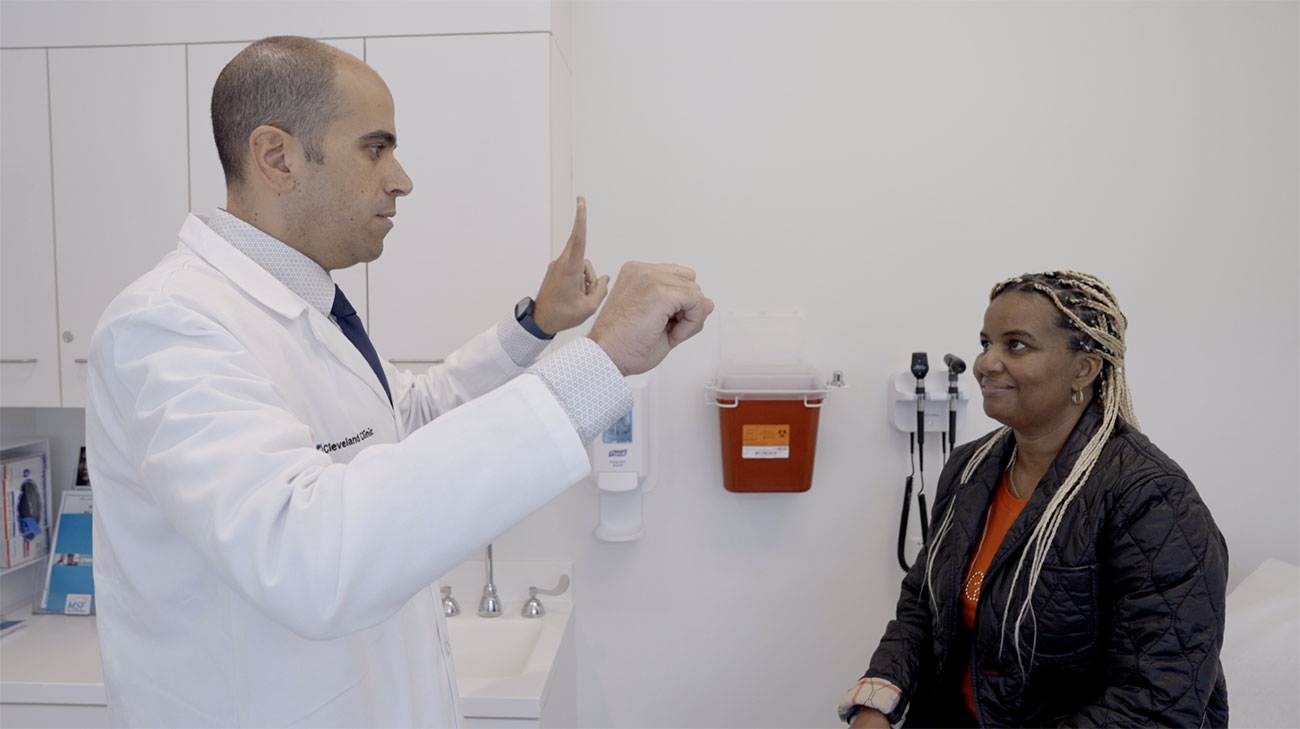Samanta Vasconcellos was in the right place at the right time when she experienced her stroke. She happened to be at an appointment at her primary care doctor’s office, at the Krupa Center in Weston, when it hit.
“I had no symptoms,” she says. She felt fine going into the appointment, which was simply a follow-up to discuss her annual blood work results, which were normal as well. But when Sara Fandino, APRN, left the room for a few minutes to get paperwork, Samanta felt a warm feeling across her face. When Sara came back in, Samanta was unable to speak.
“I asked her if she was okay and she wouldn’t speak,” Sara says. “I asked her to smile for me and I saw the droop in her face. That’s when I knew she was having a stroke.”
Though the Krupa Center is right across from Weston Hospital, Sara called 911 so that Samanta could be transported there. Samanta says she was able to stay calm because she knew she was in the right place. When the ambulance arrived, Samanta was able to walk herself to the gurney and lie down. She remembers seeing Amre Nouh, MD, a neurologist and Chair of the Neurology Department when she arrived at the emergency ambulatory entrance of the emergency department. He introduced himself and told Samanta he would be taking care of her, and then she passed out and says she doesn't remember the rest.
“As a comprehensive stroke center, we were ready to go,” Dr. Nouh says. “We activated our stroke protocols, and everything fell into place.”

Photos courtesy: Cleveland Clinic
Dr. Nouh and the stroke team identified a blockage in the middle cerebral artery that needed immediate intervention. Samanta was given a clot-busting medication and moved to the neurointerventional radiology suite, where minimally invasive procedures are used to treat stroke.
There, Mubashir Pervez, MD, a neurointerventionalist, and his team removed the blood clot and restored blood flow to the area.
“I’m extremely grateful for the team,” Samanta says. “After the stroke I was walking normally. It was a Christmas miracle.”
Dr. Nouh says the odds of a favorable outcome and recovery are directly related to how quickly the stroke is treated while it is happening. Samanta’s stroke was caught and treated early, which was a big factor in her recovery.
“As we say, time is brain,” Dr. Nouh says. Timely treatment can lessen or reverse the effects of a stroke.
Though Samanta was very near the hospital when she needed stroke care, Cleveland Clinic has a stroke team ready and always waiting for patients coming in from anywhere to allow the fastest treatment possible.
Samanta moved to Atlanta shortly after her recovery to be closer to family but before leaving, she made sure to see Sara Fandino, APRN for a follow up and to thank her for catching her stroke warning signs. She is back to doing things she loves like spending time with her children and family and cooking.
Related Institutes: Neurological Institute

